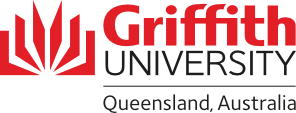Please note that this is an on-going project.
Project Description
This project aims to enhance the yield of microalgal cultivation and harvesting processes by implementing a high-efficiency culture platform.
Microalgae is a sustainable food source for human as it provides nutrients critical for wellbeing with minimal ecological impact. Commercial microalgae cultivation methods require immense water and land use due to the inherently low bioproductivity. Common microalgae strains are typically produced at yields lower than 0.1% in terms of dry weight to water content.
Large-scale open format microalgae culture is also susceptible to fouling by microorganisms that produces dangerous toxins such as Microcystis. Carefully controlled environments and use of antibiotics can keep fouling in check but significantly increases cost of operations.
Closed format microalgae culture known as photobioreactors can achieve significantly higher yields. Nevertheless, photobioreactors incur high operational costs due to the demanding growth conditions.
To address these persistent issues, we implement digital microfluidics technology based on non-wetting droplets known as liquid marble – a microlitre-sized droplet encapsulated by hydrophobic particles. Due to the small size, liquid marbles have large surface-area-to-volume ratios that significantly increase growth rates and carrying capacities. Microalgae grown in liquid marbles are subsequently harvested to be fed into conventional downstream processes.
Project Personnel and Beneficiaries
Organisations involved in microalgal cultivation such as photobioreactor manufacturers, microalgae producers, bioprocessing and nutraceutical companies.
Outcomes to Date
Our preliminary results show that the liquid marble platform for microalgae culture achieves 30 times the yield compared to a typical culture flask platform. We find that liquid marbles effectively addresses the issue of self-shading whilst providing high gas permeability required for photosynthesis.
Project Significance
Microalgae are exceptionally efficient at removing greenhouse gases. Growing 1 kg of microalgae removes approximately 1.83 kg of atmospheric carbon. Conventional microalgae culture are restricted by geography as open raceway ponds tend to be large and water intensive whereas growing microalgae in estuaries causes potentially irreversible destruction of habitats. A high-efficiency micro-photobioreactor has a much smaller footprint which allows it to be set up at locations where environmental impacts are minimal, especially near carbon dioxide emission sources. A higher atmospheric carbon concentration simultaneously improves the rate of carbon sequestration and microalgae growth. By using an edible liquid marble to eliminate energy-intensive downstream processes, the product cycle of microalgae culture and harvesting can potentially be made carbon negative, thus contributing to the urgent plan for Net Zero emissions by 2050. In addition, microalgae can feed
on glycerol which is a by-product of biofuel production. Since biofuel can be processed from microalgal biomass, the use of its by-product as microalgal feedstock follows the principle of circular economy.
Most importantly, a highly efficient photobioreactor has the potential to achieve a high nutrient production per water and land use ratios. The combination of a growing global population and the impending climate crisis severely strain water security to the point that water conflicts at the international arena is now a common phenomenon. By supplementing water-intensive agriculture, microalgae can free up critical water and land resources which alleviates the zero-sum game. This feature is especially desirable for drought-prone regions such as Australia.

